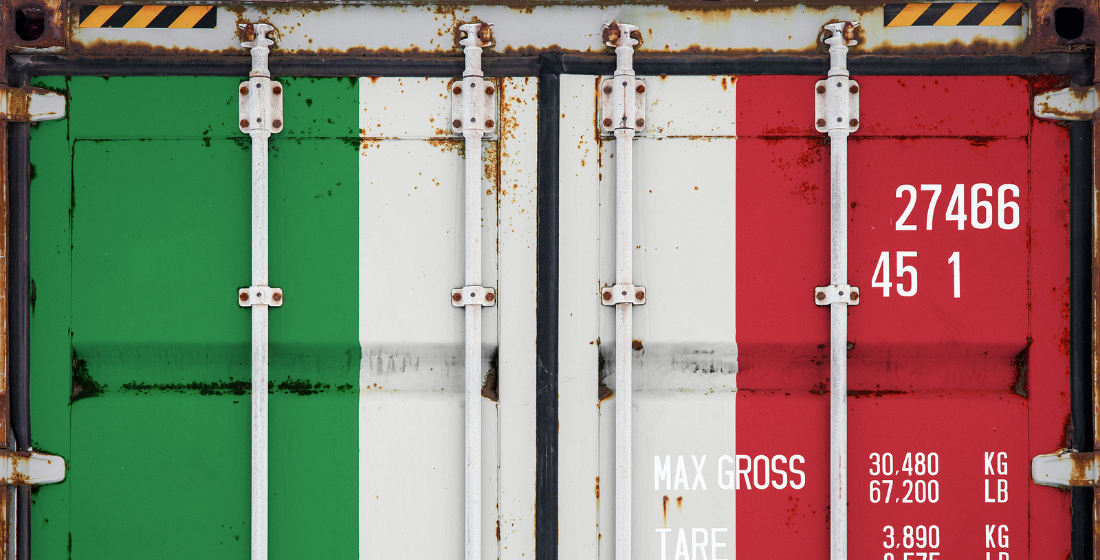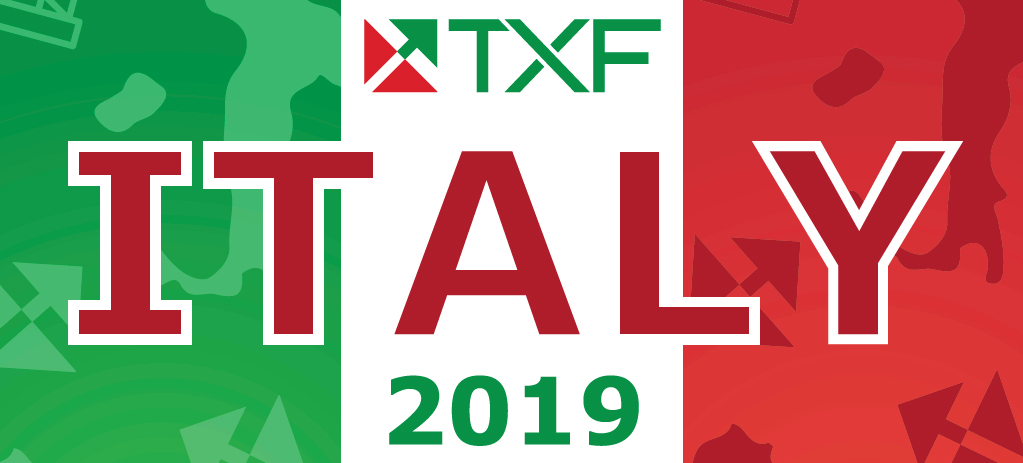SACE SIMEST: ECA excellence despite domestic uncertainty
Ahead of TXF Italy next month, TXF talks to Alessandro Terzulli, chief economist of SACE, about the uncertainties of the economic scenario in which SACE SIMEST currently operates and the initiatives it is pursuing to boost exporter confidence.

The Italian market has faced considerable international and domestic political challenges over the past few years. But, SACE SIMEST, the second most active ECA by deal volume in 2018 according to TXF Data, has been working to ensure the news does not impede the trade flow from Italy’s export-driven economy.
While SACE SIMEST’s involvement in the European market continues, its exposures are moving to new regions and sectors as the ECA follows its exporters in a bid to forge stronger Italian ties around the world for future export contracts. Specifically, Italy has recently enjoyed growth in the exports of pharmaceuticals to the United States – and beyond. And as Italian exports move into new markets, SACE SIMEST is trying to develop a more coordinated and flexible strategy to support its exports.
TXF sat down with Alessandro Terzulli, chief economist of SACE, to discuss the economic scenario in which SACE SIMEST currently operates.
 TXF: What issues might arise from domestic Italian politics, especially the establishment of the new coalition?
TXF: What issues might arise from domestic Italian politics, especially the establishment of the new coalition?
Alessandro Terzulli (AT): Italy needs stability to meet its growth goals and the reaction of the markets to the establishment of the new government seems to be positive. We are attentively following all evolutions.
TXF: So we can say that both the external and internal factors have contributed to last week's GDP announcement?
AT: All we can say so far is if you look at the spread between Italian 10-year bonds and the German bund, they have been trading at over 200 for quite a long time. After the news of the crisis, that has gone down it's now under 160, with more potential room for further improvement. It is difficult to say what the cause is. There is a correlation with the political situation, of course. We haven’t had long to look at what the causation is, but for a country like Italy, which has a high debt to GDP ratio (over 132%), lowering interest expenses is important.
By October there will have to be new measures, or at least the first proposals of the new government, such as the Budget Law proposal to the Italian Parliament for 2020. According to the new government programme, on the fiscal side, the priority is to avoid the planned VAT rate hikes in 2020 worth an estimated €23 billion in revenues.
As an ECA we are in a better position to comment on external factors. We’ve had a forecasting model for 13 years now and we produce a report on the forecast of Italian exports where we comment our view on the export of Italian goods. Our picture for 2019 is a +3.4% growth for the whole year. According to Istat, the Italian National Institute of Statistics, from January through July exports of goods in value terms increased by 3.2% over the same period of 2018. That is good news.
TXF: Where have you seen growth so far this year?
AT: Exports to the United States have grown, led by consumer goods, especially pharmaceuticals. The exports of pharmaceuticals in Italy has been increasing month after month not only to the United States, but also to many emerging economies, which will be leading international demand of pharmaceuticals over the next decade. This is interesting because over time many large foreign multinationals have invested in Italy in this sector, creating important supply connections and intra-firm trade.This is partly due to the highly skilled employees, which are in the workforce at every level. There are also several competitive Italian companies.
Switzerland has been quite an important market. That’s not a big surprise, it's cross-border intra-firm trade. The surprise is that there has been quite an increase in our exports in the textiles and leather products and steel and that is is due to the fact that Switzerland is a crucial hub point for some products. We have found therefore Switzerland to be a very important type of market.
Additionally, there has been a big increase of our exports of goods to Japan. The significant increase observed this year could be linked to the new free trade deal with Japan under the European Union, which went into effect on 1 February. We will need more time to detect the effects of this trade agreement. However, we can reasonably assume that Rome has benefitted from those reductions in tariffs and non-tariff barriers thanks to the free trade agreement.
India has also been a leading market for Italian exports, even though the economy is slowing down.
TXF: What are the most important sectors for Italian exporters in India?
AT: It's an interesting market for us. Italian exports and Italian companies are doing pretty well there, not only in the first part of this year, but also last year and in 2017. Italian companies have been discovering this market. Our market share is not that high, around 1% so there is still a lot to do. But the signs are good: when Italian companies start to diversify their exports, and doing so with strategy, it will bear some fruit over the medium and long term.
It's not an easy market, competition is quite aggressive there. It's a market which is culturally and geographically far from Italy. This makes our performance even more important to us.
As an ECA we are looking at this closely. We have an office in Mumbai. There we have done some “Push Strategy” transactions. Two years ago we launched this new pro-active approach to boost the competitiveness of Italian businesses across the world. Through this program we offer to major foreign buyers medium/long-term credit lines at competitive rates to facilitate purchases of Italian goods and services or strengthen existing business relations. Moreover, under this framework we organise meetings, inviting Indian companies. There will be an important event in Milan with Reliance Group. So the idea behind the event is to create business opportunities and to help Italian companies, to better understand how to be included in the vendor lists of these large multinational companies.
TXF: Could you tell us a little bit more about your Push Strategy?
AT: I was mentioning India as an example because the performance was quite impressive over the last year. But we have done the Push Strategy in Brazil, the UAE, Mexico, Turkey, and Kuwait. What’s interesting is that the Push Strategy approach goes beyond the financial side of the transaction. Indeed, business matching events between Italian firms, top management and the foreign buyers’ procurement team benefiting from the loans guaranteed by SACE are an integral part. Just to mention a figure, from the beginning of the program, over 400 Italian businesses participated in meetings, getting to know the major players benefiting from the credit lines.
TXF: Any final points on the state of the market with regards to Italian exports or maybe the country's risk rating?
AT: We haven’t covered the structured aspects of Italian exports and its price competitiveness. Exports in value terms have grown in the last years, but the 2008 financial crisis played its role.
Price competitiveness is important, but for the Italian exporters is even more important the “non-price” competitiveness, the “quality” in Italian goods. It's very difficult to measure, But there are some proxy variables used by economists and there is relevant research stating that Italian companies perform really well in terms of non-price competitiveness.
The Euro gave a lot of benefits to our economy too - given it no longer allows for competitive devaluations, forcing companies to be more efficient in order to approach foreign markets. This factor, together with China entering the WTO and emerging economies by growing in the global landscape, but especially in the low-value added production, has had significant repercussions on Italian exports. Many Italian companies reacted to such an important shock and reinvented themselves by promoting quality upgrades of their productions. That produced the effect of being shielded in terms of competitiveness. That hasn't just happened in the traditional sector of our exports of consumer goods.
Everybody knows Italian fashion, leather goods, food and beverage. But mechanical engineering is the leading sector for our export: it represents one fifth of total exports of goods. This is an important sector where quality can play a key role. Many Italian mid-size companies are global leaders.
It's clear that exports have not been an issue for Italy, but that doesn't mean we can't do better. For example, infrastructure. It is important in terms of competitiveness, the quantity and the quality of infrastructure. If we could fill the gap with Germany, which would take a very long time, we could gain almost €70 billion in terms of additional exports. Infrastructure is important to boost Italian goods.
Another issue is the average size of Italian companies. The average size of Italian exporters tends to be smaller than their main competitors like Germany, France, and Spain. The smaller you are, the stronger are the constraints approaching international markets. An important role for SACE SIMEST to play, in order to support SMEs, is to spread information about risks and opportunities. We have a new program which is closely following this issue. The Education to Export program, has a specific target of addressing the small and medium enterprises to try to help them to export more and to increase the “culture of exports”.
One of the issues that Italy has been facing over time is the lack of centralised coordination. But in recent years there's been a bigger effort to coordinate through the “Cabina di Regia”, a sort of board including key institutions. The aim is to get together all the players that support the internationalisation of Italian companies, including SACE SIMEST, and define together the priority markets, address the main issues and delineate business opportunities. We are part of it and we think it can generate results.

Please click here to see the agenda and attend TXF Italy on 15 October in Rome





